The Senningen Castle today has an important reputation as an international conference centre.
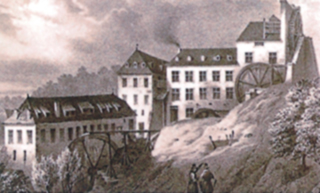
The “Lamort-Mill” first and last paper mill of the Niederanven community.
During the last centuries this historical site, formed by a main building with two side wings attached witnessed a very bold past. The origin of its history is marked by the construction of a paper mill in Senningen on the property of the Wiltheim Clan, probably at the end of the 17th century. Monks constructed this factory because of their growing need in paper.
Across the way of the paper factory, which had 3 adjacent paper mills, stood another building, representing the factory owner’s lodging and the dwelling for the workers and the cattle. What had probably been the decisive fact to choose this site for the factory was the steep slope of the Senninger brook, running down the valley and powering several mills in the neighbourhood.
The owners of the mills
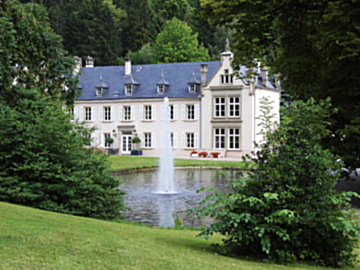 The fate of the Senningen mill is tightly linked with several family clans, active in paper fabrication, such as Pierre Bourgeois (1690–1783), a French immigrant. He was the one who ordered and lead the enlargement of the paper mill and who renovated the whole complex after the conflagration in the year 1750. The two buildings, burnt down to the ground had been reconstructed and the residential house erected in the classical style.
The fate of the Senningen mill is tightly linked with several family clans, active in paper fabrication, such as Pierre Bourgeois (1690–1783), a French immigrant. He was the one who ordered and lead the enlargement of the paper mill and who renovated the whole complex after the conflagration in the year 1750. The two buildings, burnt down to the ground had been reconstructed and the residential house erected in the classical style.
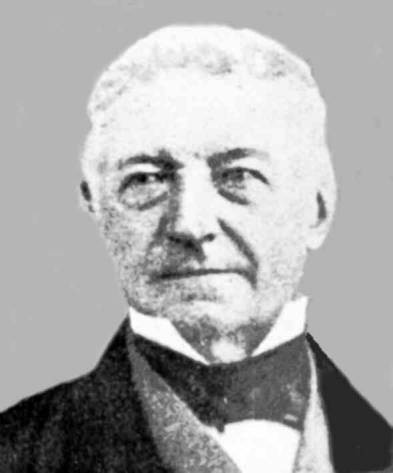 Jacques Lamort (1785–1856) can be considered as the most important owner of the paper factory in Senningen. Under the management of this active and innovative man, the paper production reached its maximum. He managed several mills in the region and mechanised the paper production. He even ordered to canalize the brook of Senningen, in order to use the water’s force.
Jacques Lamort (1785–1856) can be considered as the most important owner of the paper factory in Senningen. Under the management of this active and innovative man, the paper production reached its maximum. He managed several mills in the region and mechanised the paper production. He even ordered to canalize the brook of Senningen, in order to use the water’s force.
From a mill to a castle
Economic problems and family conflicts led to the Shut-down of the paper mill in the year 1882. The same year the industrial Ernest Derveaux bought the production site. During this year the factory had been knocked down and with the owner’s house being transformed into a castle, the site took the actual shape of today. A large pond with a beautiful fountain in the middle had been laid out behind the castle and 2 side wings in a neo-gothic style had been added to the main building. The whole site was changed into a park with attractive vegetation and exotic trees.
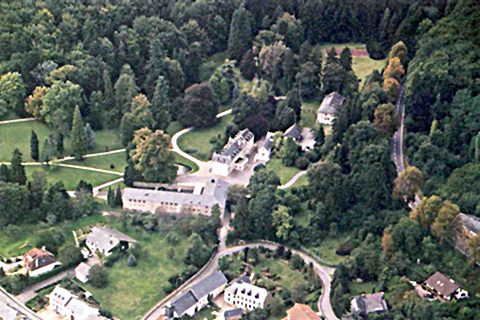
The Castle of Senningen – today the international conference centre in the middle of a charming park .
Between 1940 and 1945 the castle of Senningen served to the nazi occupations as a convalescent home to artists. In 1952 the Luxembourg government used the whole site for military administration.
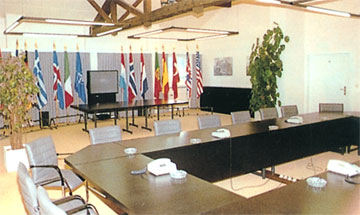 From 1990 to 1991 more renovations took place and in the frame of the Luxembourg’s European Direction, the site had been transformed into an international conference centre, also hosting the national Communication Centre since 1968.
From 1990 to 1991 more renovations took place and in the frame of the Luxembourg’s European Direction, the site had been transformed into an international conference centre, also hosting the national Communication Centre since 1968.
